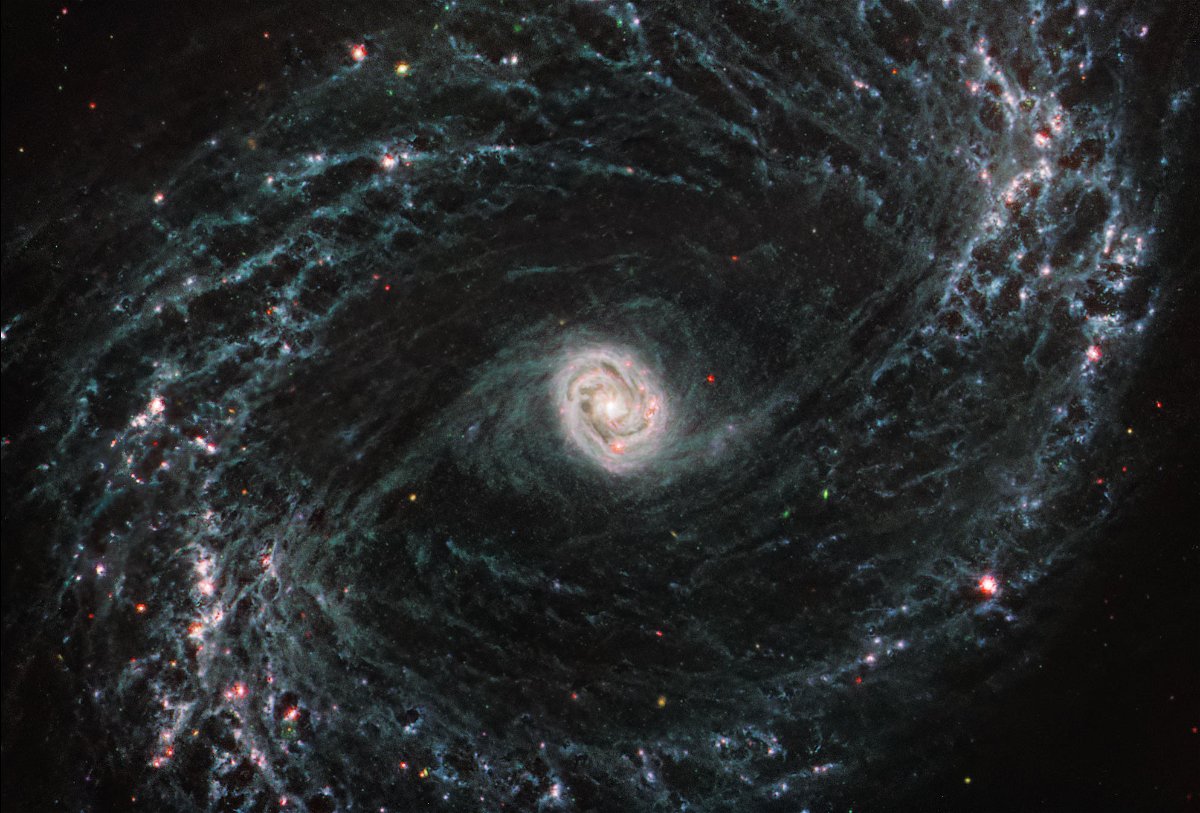Webb telescope sees once invisible structures inside spiral galaxies

The James Webb Space Telescope took this image of NGC 1433
By Ashley Strickland, CNN
Astronomers have used the James Webb Space Telescope to peer inside the heart of spiral galaxies, where young stars carve out glowing paths.
The space observatory can see the universe in infrared light, which is invisible to the human eye, making the telescope uniquely poised to look through the dust that obscures some galactic features when less powerful telescopes are used.
Researchers participating in the PHANGS collaboration, or Physics at High Angular resolution in Nearby Galaxies, are using Webb’s infrared capabilities to study 19 spiral galaxies.
So far, the telescope has observed five of them in detail, including galaxies M74, NGC 7496, IC 5332, NGC 1365 and NGC 1433.
In visible light, the galaxies appeared dark and dim. But Webb’s Mid-Infrared Instrument was able to see the ways that stars and star clusters can shape galactic structure. The never-before-seen details captured in the Webb images show how these intricate networks within galaxies are influenced over time as stars form and evolve.
“We are directly seeing how the energy from the formation of young stars affects the gas around them, and it’s just remarkable,” said Erik Rosolowsky, a PHANGS team member and an associate professor of physics at the University of Alberta in Canada, in a statement.
Stars releasing energy created giant bubbles of gas and dust, or luminescent cavities, that gather around the spiral arms of the galaxies, and sometimes these bubblelike features overlap to form shells and a structure similar to a spiderweb.
“The PHANGS team has spent years observing these galaxies at optical, radio, and ultraviolent wavelengths using NASA’s Hubble Space Telescope, the Atacama Large Millimeter/submillimeter Array, and the Very Large Telescope’s Multi Unit Spectroscopic Explorer,” said Adam Leroy, a PHANGS team member and professor of astronomy at Ohio State University, in a statement.
“But, the earliest stages of a star’s lifecycle have remained out of view because the process is enshrouded within gas and dust clouds.”
The observation program will continue to focus on different galaxies, conduct a census of star formation, and unlock more insights about the life cycle of stars and how these stellar objects influence the galaxies they call home.
The-CNN-Wire
™ & © 2023 Cable News Network, Inc., a Warner Bros. Discovery Company. All rights reserved.
